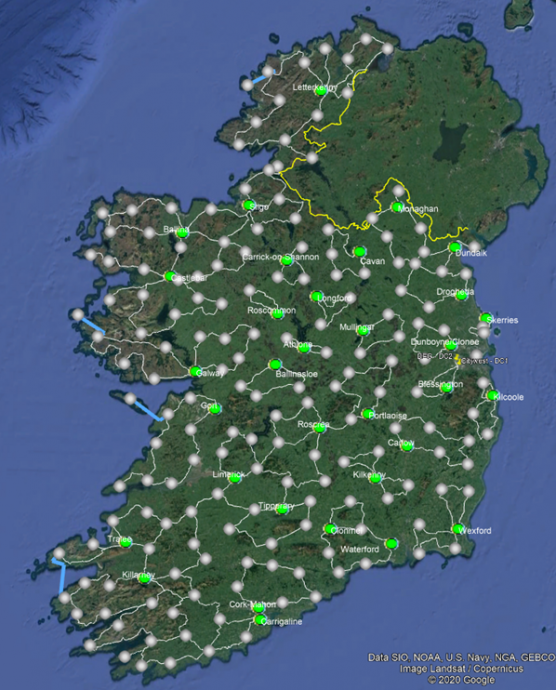The network rollout for the National Broadband Plan is divided up into 227 ‘Deployment Areas’ – known as DAs – up and down the country, taking in every county. These are typically an area of approximately 25km in radius and in total, all 227 deployment areas stretching across 96% of Ireland.
The route of the network rollout is not based on cost or an economic model. Instead, it’s based on an engineering design that allows NBI to get to every premises as quickly as possible, working within the confines of how fibre networks are built. Each DA effectively creates a ‘fibre ring’ which is essential to ensure reliability, robustness and resilience. Critical to the success of the network, NBI’s fibre rings are built with back-ups, ensuring that in the event of one fibre cable being disrupted, the whole network continues to perform as it should. One point of failure will not bring down the network.
Each fibre ring that NBI deploys is designed in a way that is non-discriminatory, meaning that as the rollout progresses, can pass relatively urban areas at the same time as the some of the most remote premises. Also supporting NBI’s mission to build the network as quickly as possible, the design will utilise existing infrastructure, rather than build it from scratch.
The architecture of NBI’s network is based specifically on the principle of NBI’s newly deployed fibre connecting to ‘exchanges’, located in towns and villages across Ireland and either owned by eir or enet (enet operates the State owned Metropolitan Area Network – or MANs). Within each exchange, NBI is able to gain access to electrical equipment to allow the network to function.
The network design isn’t quite as simple as an ‘inward/out’ build from each exchange. Each DA creates a different shape on the map, as it takes in towns, villages and every boreen across the Intervention Area.
In 33 of NBI’s 227 DAs, there are what’s known as ‘points of handover’. These are particularly important in the network design, as this is where Retail Service Providers (RSPs) – who will sell services directly to end-users – can place their own equipment alongside NBI’s to access the fibre network, as well as gain access back to the main data centres held in Dublin which connect the network back to the global Internet. Without these 33 DAs built around Ireland’s existing point of handovers, the other DAs do not have any connectivity back to the Internet. The rollout strategy therefore is to get these 33 DAs in place as quickly as possible, before extending beyond these areas.
View Overview of Rollout
